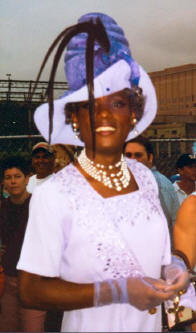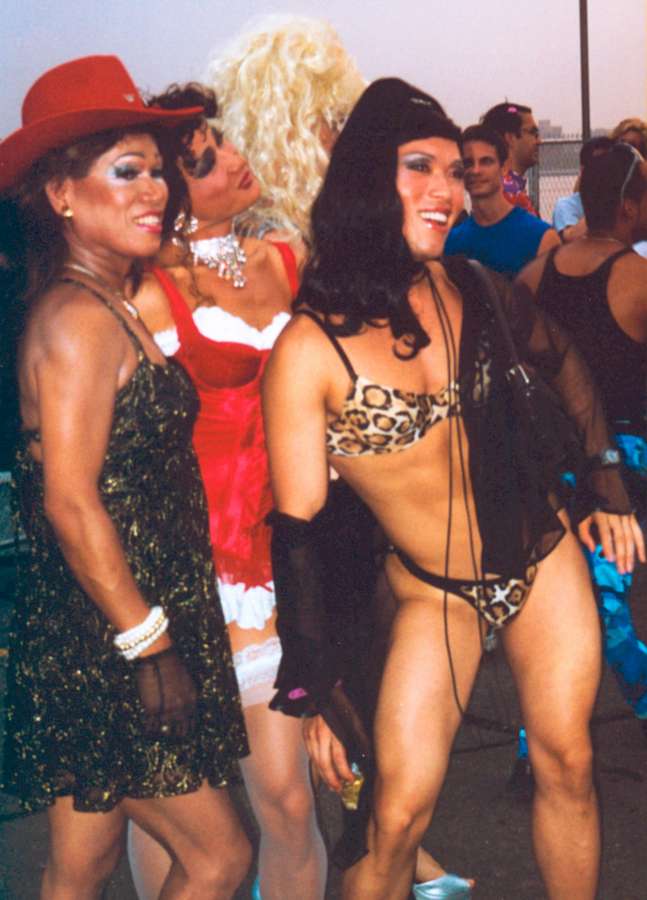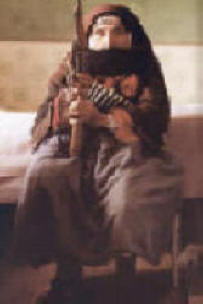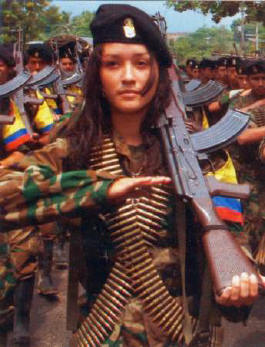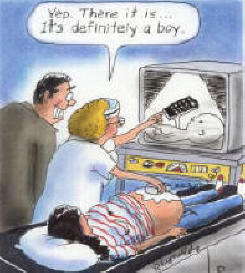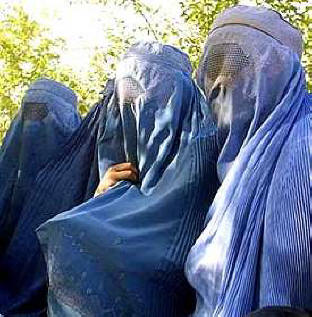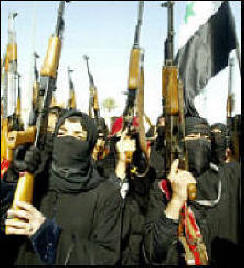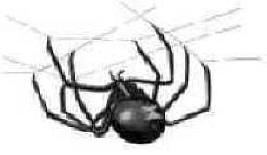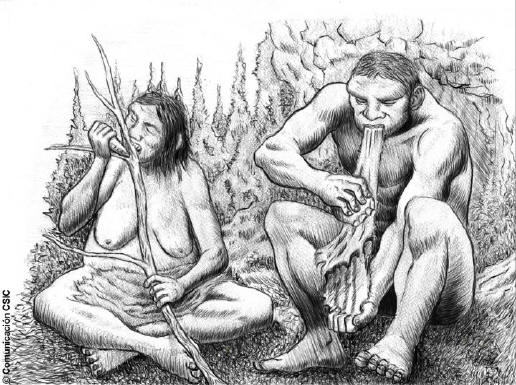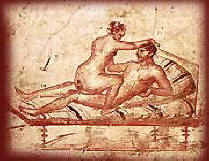Anthropology of Sex and Gender
Fall 2005

Required Textbooks:
1. E. Babatunde, Women's Rights vs. Women's Rites: A Study of Circumcision among the Ketu Yoruba of South Western Nigeria. Trenton, NJ: Africa World Press. 1998.
2. P.J. Caplan & J. B. Caplan, Thinking Critically about Research on Sex and Gender. NY: Harper Collins. 1994.
3. R.B. Felson,
Violence & Gender Reexamined. Washington, D.C.: American Psychological Association. 2002. 4. S. Nanda, Neither Man nor Woman: The Hijras of India. Wadsworth Publishing Co., 1999.5. A. Young, Women Who Become Men: Albanian Sworn Virgins. Oxford University Press, 2000.
Recommended Books:
1. E. Friedl, Women and Men: An Anthropologist's View. Prospect Heights, IL: Waveland Press. 1994.
2. D. Brazil, No Money! No Honey! A Candid Look at Sex-for-Sale in Singapore. Singapore: Angsana Books. 1998.
![]()

(Ashoura)
Course Description:
This course is primarily concerned with understanding and explaining the differences in gender-related behavior that exist among various human societies and that have existed throughout time. The criteria used for defining being a man or woman varies dramatically from one society to the next, and even within the same society through time. The role of men and women in American society, for example, has changed sharply in the past 40 years, more so in some socioeconomic groups than in others. Changes in gender roles have, likewise, occurred in many other societies, both today and in the past. Moreover, many human societies recognize 'Third Genders" (i.e., neither man nor woman) that are not recognized in the U.S. or in other Western countries. A cross-cultural study of the variation that exists in the very definition of sex and gender categories, as well as in the behavior associated with specific individuals within those categories, raises a number of significant and provocative questions about the nature of gender-related behavior and about our society's views regarding sex and gender. What does this variation have to say, for example, about the biological vs. social basis of gender-related behavior, including homosexual vs. heterosexual behavior? What does the variation say about commonly accepted beliefs about gender-related behavior in American society? Many people believe, for example, that men are inherently more aggressive and violent than women and that women are naturally more nurturing than men? Are these beliefs supported by research, or are they merely stereotypes created by the traditional structure of gender relations in American society? This course will explore these and other related issues by examining the difference between sex and gender in various societies. This distinction will perhaps be most clearly highlighted by examining the various forms of sexuality that exist in human societies.
The course begins by distinguishing between sex and gender and by questioning the biological basis of gender-related behaviors. We will explore both empirical and methodological issues surrounding attempts to assign a relative importance to biological factors in determining gender identity or in explaining gender-related behavior. We will then examine the social construction of gender in various societies, including in the contemporary U.S. "Third Gender" (or trans-gender) groups or subcultures that highlight this construction will be explored in some detail. These will include the Berdache (Two Spirits) among Native Americans, the Hijras of northern India, Fa'fafines in Samoa and Sworn Albanian Virgins in Kosovo.
The course will adopt an explicit materialist, scientific approach to the study of gender-related behavior. Once we explore the variety of socially constructed gender categories and behavior, the course will turn to a consideration of the analytical and methodological requirements that need to be considered before the topic of gender-related behavior can be approached scientifically. The course will then apply a theoretical model that will attempt to systematically explain variation in gender-related behavior across human societies. Focusing on the cost/benefit implications of different individual and group-related adaptive behaviors, the model will emphasize the role that basic ecological and economic processes play in determining the organization of human societies, including the effect they have on power relations in society. The course will then explore the implications that differential power relations have for understanding the pattern of gender relations and the construction of gender categories and identities that exists in various societies, be they hunter-gatherer, horticultural, agricultural or industrial. In the process, the course will cover gender-related issues surrounding division of labor, occupational structure, marriage rules, family size, domestic organization, fertility and family planning, class and ethnic stratification, as well as social rituals and religious beliefs and practices.
Teaching Methods:
A
variety of teaching techniques will be used throughout the course,
including lectures, class discussions, small-group discussions, films, and
out-of-class assignments. In addition, reading assignments will be given
in the form of handouts distributed in class, Internet sites, email
messages and both articles and videos placed on reserve in the Trexler
Library. These different sources of information and methods of teaching
are used to complement and reinforce each other in order to increase the
depth and the scope of the student's understanding of the material
included within the course. All such material will be considered required
reading and will potentially be included on examinations.
Examinations:
The
following procedures will be used to arrive at a student's final grade in
this course:
|
1. Mid-Term Exam (multiple-choice) 2. Final Exam (comprehensive, multiple-choice) 3. Book Review 4. Research Paper 5. Class Participation |
20% 20% 2 0%30% 10% |
Essays and Research Papers:
1. Each student will submit a critical evaluation of Richard Felson's book, Gender and Violence Reexamined. In this essay (see research essay), the student will be expected to: (a) succinctly state the thesis of Dr. Felson's book; (b) summarize the argument presented by him; (c) describe the principal examples and/or data that he uses to support his thesis; and (d) critically evaluate his book in terms of both the methodological issues raised within the course and available empirical research.
2. Each student will complete a 15 page research paper (3000-4000 words) examining an issue related to the anthropology of sex and gender.
3. Students are encouraged to meet regularly with the instructor to discuss the progress of his or her paper. Frequent consultations can only help to improve the quality of both the final paper --and, thus, the grade that it will receive.
4. Although the primary concern will be with the quality of the ideas and analysis presented, both the book report and the research paper will be evaluated in terms of their originality, organization and clarity, and in terms of their adherence to accepted writing standards. Papers must be typed clearly and legibly. They must also be organized, grammatically correct and free from spelling errors. papers must, therefore, be carefully proof read before they are submitted. A sloppy and poorly written report will not receive as high a grade as a comparable report which is neat and clearly written, which expresses a coherent theme, and which contains few spelling and grammatical errors. Having an idea that you cannot express clearly and concisely is little better than not having the idea at all. Developing good writing skills is, thus, very important. Students are, therefore, strongly advised to meet with the social science reference librarian and to visit the Campus Writing Center several times during the course of writing their papers! Students who have not done this in my previous classes, have generally written substandard papers and received less than satisfactory grades.
5. Research papers must be based on scholarly sources. Internet sources, except in rare instances, are NOT considered valid sources. The student should use the reading material assigned in class and class presentations as a guide to the kind of research that is expected.
6. Students writing research papers will need to obtain research materials that are not available in the Trexler Library in order to complete a satisfactory paper. This will necessitate either travel to other libraries in the Lehigh Valley or extensive use of Interlibrary Loan services through the Trexler Library. Students should be aware that obtaining research materials through Interlibrary Loan may take several weeks and should, therefore, start their research papers as soon as possible. Not receiving adequate sources in time to analyze your subject and write your paper will seriously affect the quality of the paper you submit and the grade your paper receives.
7. The following schedule will be followed in completing the research paper. Grades will be calculated for each stage in the production of the research paper and will be combined to calculate the overall grade for a student's research paper.
|
September 21: November 2:November 9: December 2: |
Research paper topic due Annotated bibliography due. First draft of research paper due. Final revised copy of research paper due |
||
Grading Policy:
1
. All written material submitted as part of the requirements for the class MUST be typed, free of typing and grammatical errors and properly referenced. Handwritten materials and materials that are sloppily done will NOT be accepted.
2.
All assignments and examinations must be completed or taken at the time scheduled. Late essays will only be accepted and make-up tests will only be given in the event of an emergency and will receive a 10-point reduction in grade for each day they are late (i.e., a score of 80 on a make-up test will be recorded as a 70, 60, 50, etc.). (Printer dysfunction is NOT a valid excuse for a late paper. It shows that the student waited until the very last minute to complete an assignment.) Similarly, incomplete course grades will be reduced by 10 points when they are completed. The grade on any exam not taken or assignment not completed will be zero. Plagiarized assignments will also receive a grade of zero.
3. Plagiarism constitutes a violation of the Academic Behavior Code and will be dealt with VERY STRICTLY. The Sociology and Anthropology Department treats plagiarism cases very seriously. Depending on the nature of the plagiarism, a student could receive a failing grade for the course; be referred to the Dean's Office for judicial review; and have a "VF" (violation of Academic Behavior Code) grade entered on their transcripts. If a student is in doubt about a specific situation, it is his or her responsibility to consult the instructor or some other appropriate person (such as a librarian or writing tutor) for clarification.
4. Attendance will not be taken, but absence from class is NOT an acceptable excuse for a student's failure to complete an assignment or examination. It is the student's responsibility to obtain the necessary information on days that he or she misses class. In addition, a student who regularly misses class cannot expect special consideration in the event of poor grades.
5
. In the final analysis, responsibility for completing all course requirements rests with the student. If the student has any doubt on any matter regarding the course, he or she should contact the instructor BEFORE the problem becomes insurmountable. One of the benefits of the small size of the Muhlenberg Campus is the potential that exist for easy faculty-student contact.

Additional
Comment:
Students frequently approach social science classes with preconceived
ideas about the subject matter to be covered. Due to the familiar nature
of some of the topics and issues discussed, students often rely on
socially acquired concepts and explanations, many of which are
simplistic and ethnocentric.
Sociology and anthropology offer specific concepts and methods of social
analysis.
Students are expected to learn these concepts and methods and to apply them
to the material covered in the course.

